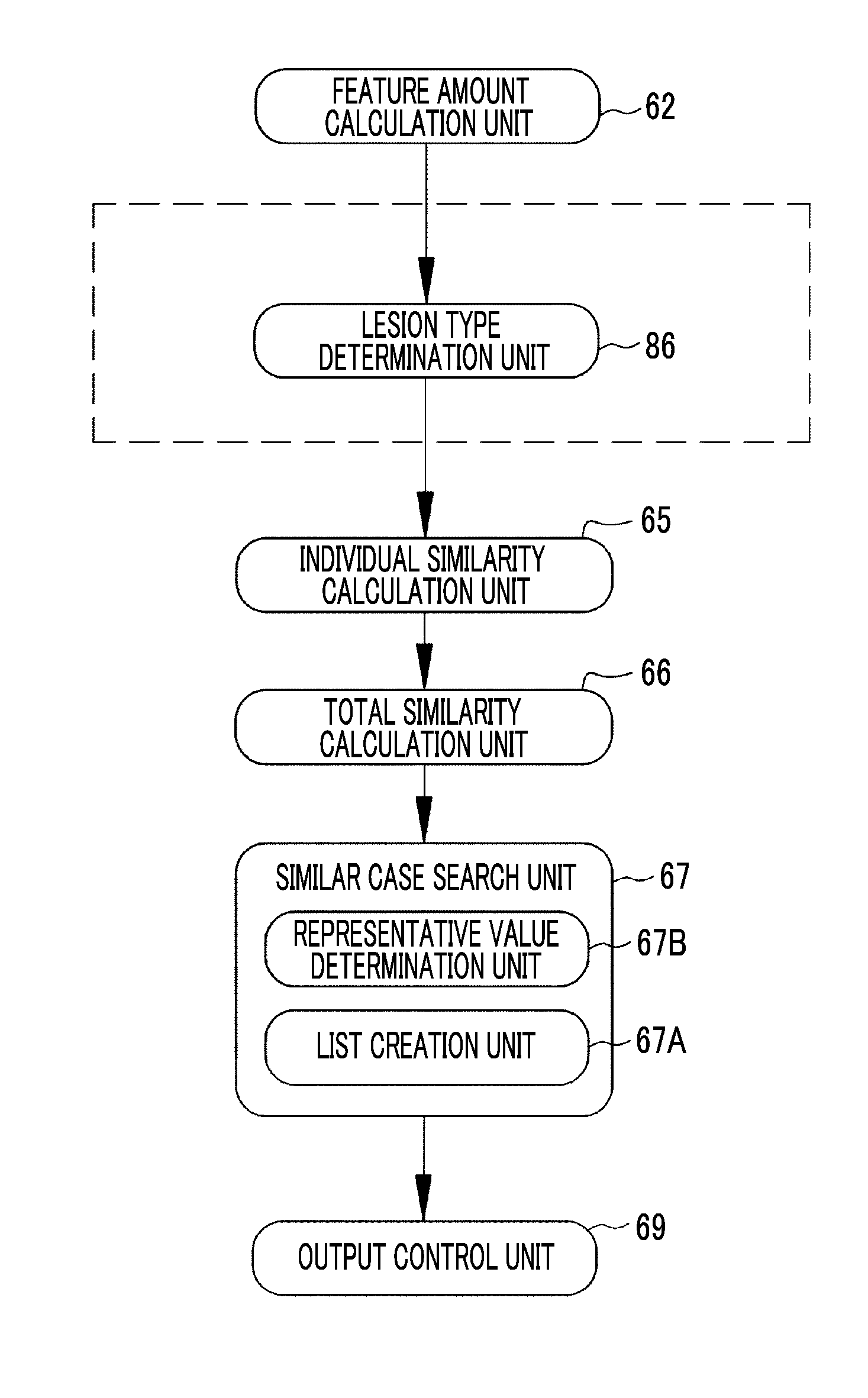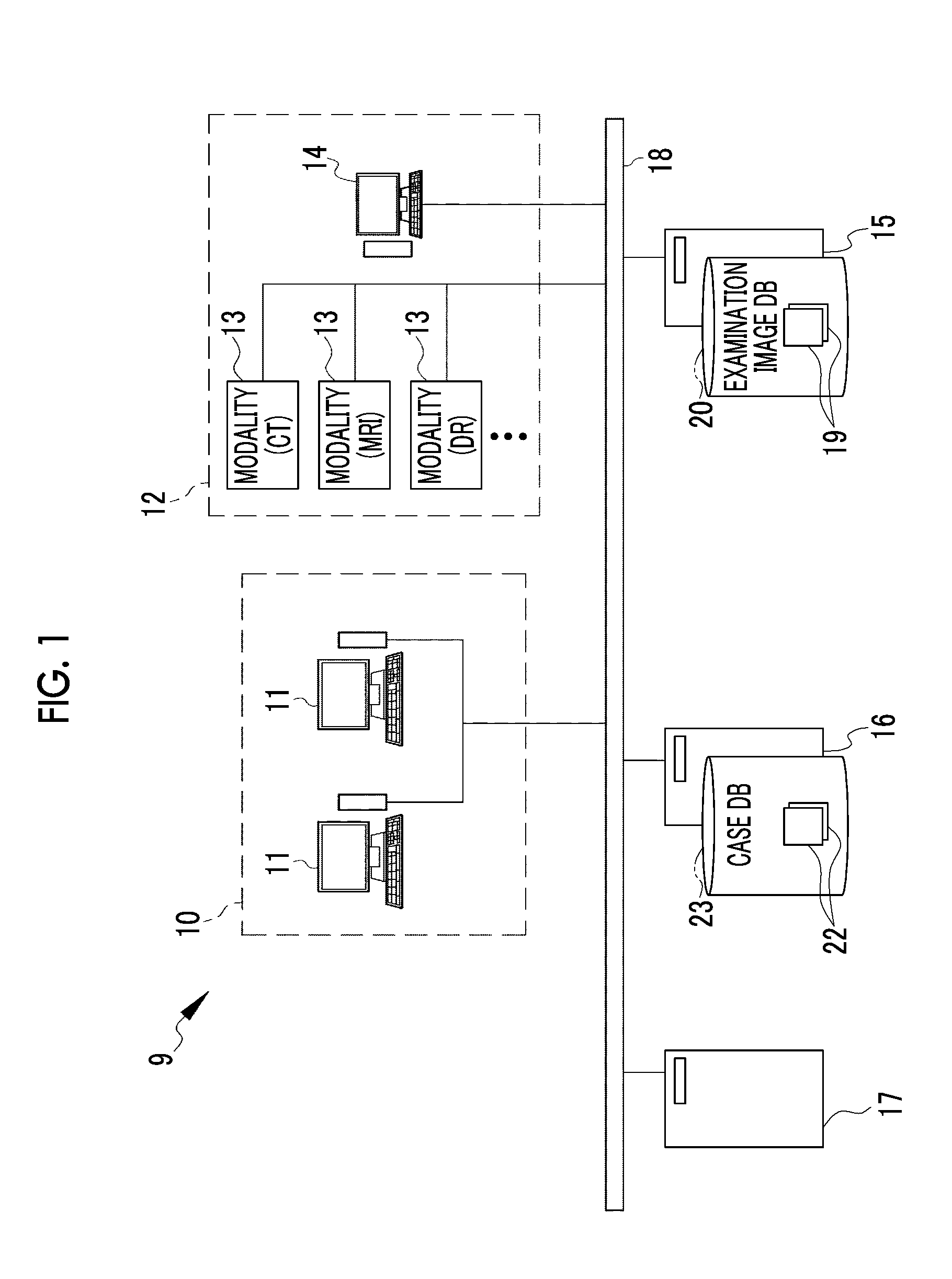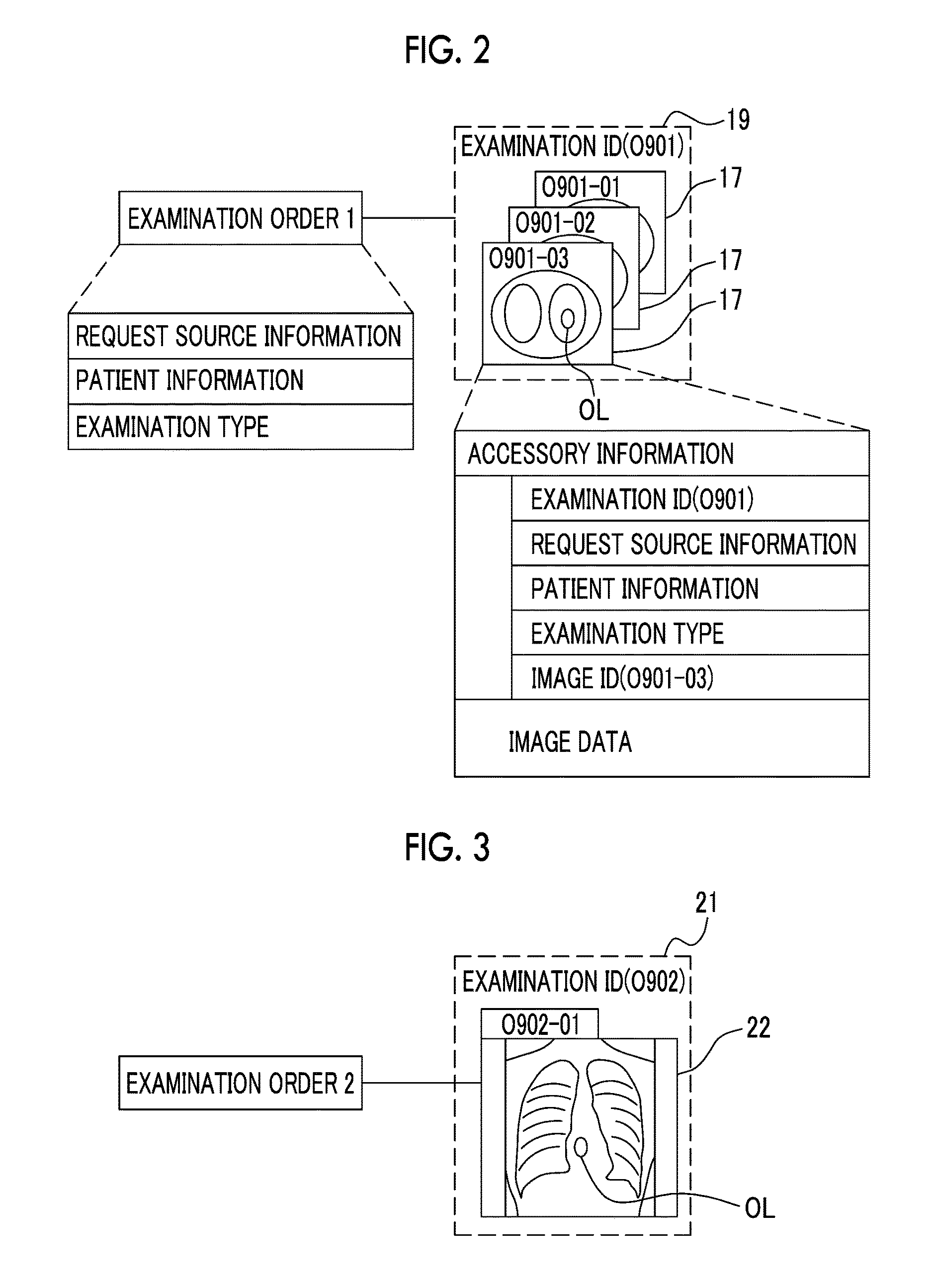Similar case search device, similar case search method, and non-transitory computer readable medium
- Summary
- Abstract
- Description
- Claims
- Application Information
AI Technical Summary
Benefits of technology
Problems solved by technology
Method used
Image
Examples
first embodiment
[0082]A medical information system 9 illustrated in FIG. 1 is constructed in a medical facility such as a hospital. The medical information system 9 includes a treatment department terminal 11 that is provided in a treatment department 10, a modality (medical imaging apparatus) 13 and an order management terminal 14 that are provided in an examination department 12, an examination image database (hereinafter, referred to as a “DB”) server 15, a case DB server 16, and a similar case search server 17. These components are connected through a network 18 such that they can communicate with each other. The network 18 is, for example, a local area network (LAN) which is constructed in a hospital. The modality 13 includes a computed tomography (CT) apparatus or a magnetic resonance imaging (MRI) apparatus that captures tomographic images and a general X-ray apparatus (for example, digital radiography (DR) or computed radiography (CR)) that captures simple transparent images.
[0083]The treat...
second embodiment
[0184]In the first embodiment, the case in which the number of types of case lesions CL is less than the number of regions of interest ROI is excluded from the search target. However, in a second embodiment illustrated in FIGS. 44 to 46, the case in which the number of types of case lesions CL is less than the number of regions of interest ROI may be included in the search target in the event that there are a plurality of types of case lesions CL. For example, as illustrated in FIG. 44, in the second embodiment, in a case in which three regions of interest ROI are designated, a case including two types of case lesions, such as the case with the case ID “C103” that is excluded from the search target in the first embodiment (see FIG. 35), is included in the search target.
[0185]In the second embodiment, a case with a case ID “C104” is excluded from the search target since it includes one type of case lesions. The reason is as follows. Since the total similarity TSM is the sum of a plur...
third embodiment
[0195]In each of the above-described embodiments, the individual similarities ISM are calculated by the correspondence between the regions of interest ROI and the case lesions CL, without determining the type of target lesion OL included in the region of interest ROI, and then similar cases are searched. However, in a third embodiment illustrated in FIGS. 47 to 51, a lesion type determination process may be performed for the target lesion OL included in the region of interest ROI and the case lesion CL, the individual similarities ISM may be calculated by only the correspondence between the lesions of the same type, and similar cases may be searched. As illustrated in FIG. 6, lesion patterns are typically distinguished by the type of lesion. Therefore, in a stage in which a feature amount is calculated, it is possible to determine the type of lesion on the basis of the feature amount. In the third embodiment, the determination of the type of lesion is used.
[0196]As illustrated in FI...
PUM
 Login to View More
Login to View More Abstract
Description
Claims
Application Information
 Login to View More
Login to View More - R&D
- Intellectual Property
- Life Sciences
- Materials
- Tech Scout
- Unparalleled Data Quality
- Higher Quality Content
- 60% Fewer Hallucinations
Browse by: Latest US Patents, China's latest patents, Technical Efficacy Thesaurus, Application Domain, Technology Topic, Popular Technical Reports.
© 2025 PatSnap. All rights reserved.Legal|Privacy policy|Modern Slavery Act Transparency Statement|Sitemap|About US| Contact US: help@patsnap.com



